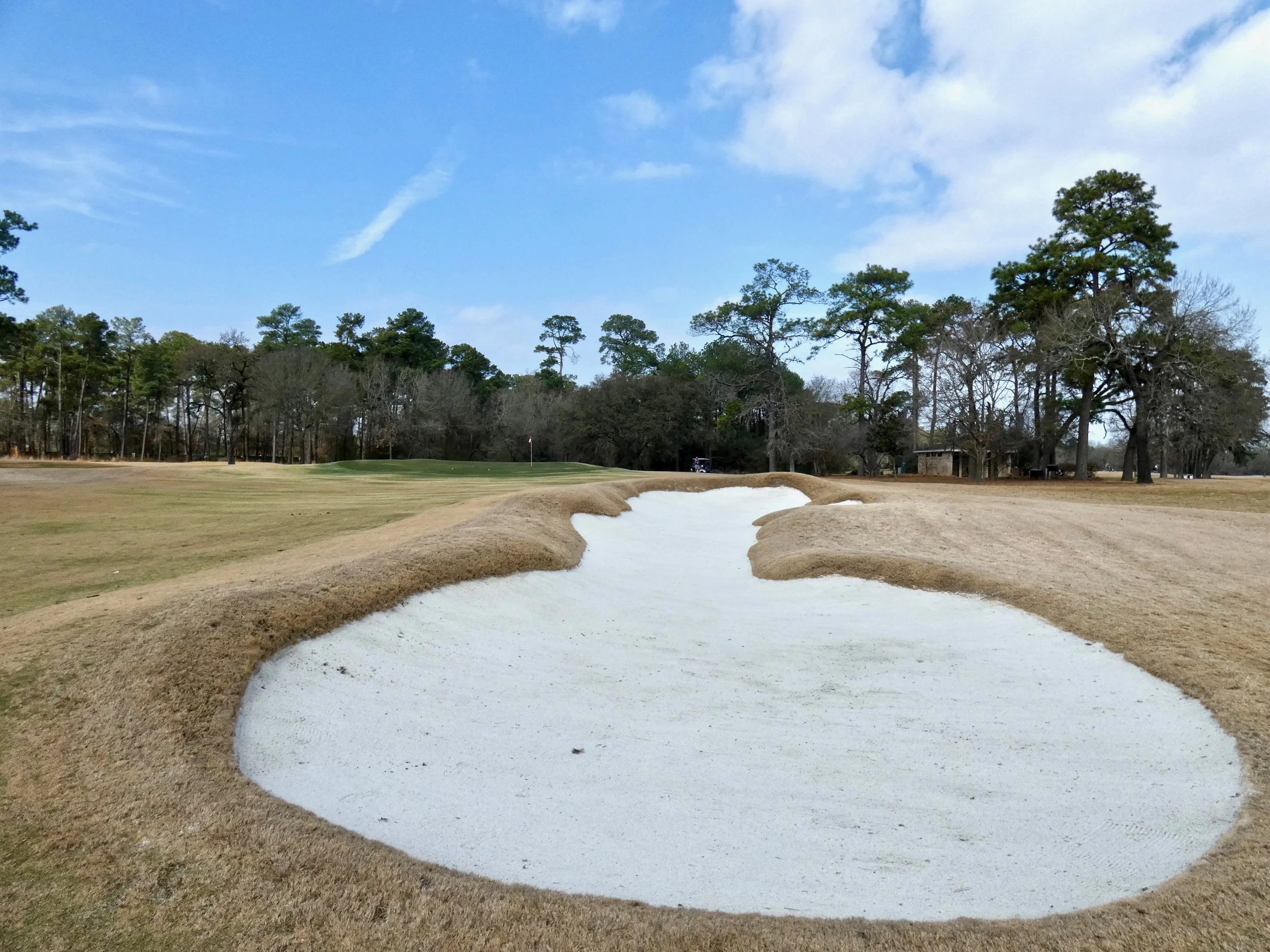No. 10 Announcement
Shows One Foot Remains
Stuck in the Past
On the morning he walked to the Castle Church in Wittenberg, Germany, and nailed his 95 Theses to the church door, Martin Luther was 32 years old. Tom Doak beat him by a year.
Doak was 31 in 1992, when he published Anatomy of a Golf Course — a scathing manifesto against late-Twentieth Century golf design, and one of the most important books ever written on the subject. Anatomy deconstructs the era’s dominant school of thought block by block, before smashing each one and explaining its inconsistency with traditional approaches that better serve nearly every element of the game.
Among the book’s wise premises was Doak’s anticipation that critics would use his youth as a weapon to undermine his views. Rather than run from it, Doak wielded his inexperience like a sword.
“Some of my readers, particularly those with competing ambitions in the world of golf architecture, will no doubt question my authority to complete this work at the age of 30,” Doak wrote. “I actually think it’s beneficial to say my piece now, before I have become entrenched in my own style of design and too busy building courses to write about it. I don’t think it’s a coincidence that many of our greatest courses, including the National Golf Links of America, Pine Valley, Merion, and Pebble Beach, were the first courses completed by their designers, when their ideas were fresh and they did not have to allocate time between ten simultaneous projects.”
Anatomy was Doak’s opening salvo in a career-long revolution spent designing world-class golf courses and explaining the decisions behind his designs. And it’s not clear when, but at some point along the way, something undeniable happened: Doak won.
It is not surprising, then, that three decades after Anatomy’s ink dried, Doak still is one of golf design’s top name brands.
But by winning his war, Doak necessarily became something that he probably never intended: an institutionalist.
During the 2014 U.S. Open, a future president described Pinehurst No. 2’s restored sandscape as a “terrible look.” One of them has since been impeached twice; the other remains in history’s highest esteem.
It happens to every successful revolutionary: tearing down an existing institution and replacing it with one in your own image makes you the owner of that institution. It does not make one’s ideas any less credible, of course, or impugn the quality of those ideas’ applications. But pretending that those ideas remain revolutionary would be silly — because the revolution is over.
Feigning awe at Pinehurst’s decision to tap Doak for its No. 10 course would be no less silly.
Doak is, by now, one of the safest bets in golf design — and deservedly so, of course. And although Pinehurst bills itself as the cradle of American golf — a noble, important role to play (for golf, anyway) — the reality is that Pinehurst Resort is a business, and businesses like safe bets.
That Doak likely will create a great golf course is about as safe as bets get. That his selection is uninspired is no less obvious. Although much (perhaps even most) of Doak’s greatest golf courses are private, many of Doak’s most renowned designs are accessible to the public: Pacific Dunes, Streamsong Blue, and the Loop at Forest Dunes, among others. Therein lies the irony of Doak’s successful revolution: once an outsider full of ideas but with little to show for them, Doak’s artistry is by now fairly well available. There is no inconsistency between gratitude for Doak’s contributions to public golf and regret that Pinehurst did not award No. 10 to a designer who could have used it to make a contribution of their own.
Pinehurst’s decision is even more uninspiring given the landscape in which No. 10 will find itself. For years, Pinehurst has struggled under a reputation as a tired old man’s haven — your grandfather’s golf resort, less adventurous than Bandon Dunes, less exotic than Streamsong, less breathtaking than Pebble Beach. Pinehurst boasts a portfolio of golf courses designed by some of the past century’s greatest architects — but that is all. And by now, Pinehurst is hardly alone in that regard.
With Gil Hanse’s stripped-down renovation of the No. 4 course, Pinehurst doubled down on the effort begun at No. 2 to reestablish the Sandhills’ native landscape as the region’s dominant golf aesthetic.
The moments when Pinehurst has challenged for center stage have come when it made unsafe decisions. Restoring No. 2 was famously chastised by a future president; history has since thoroughly rebuked both that criticism and that president. Committing to No. 2’s presentation of the Sandhills’ true native landscape by renovating No. 4 ruffled feathers but reaffirmed the entire region’s transition to a natural, less pristine aesthetic. And although the Cradle was not the first par-3 course at a major resort, Pinehurst’s decision to put a 789-yard pitch-and-putt front and center on its doorstep was bold. Years later, no reasonable person questions any of these decisions. By selecting Doak to build No. 10, though, Pinehurst has chosen to zag where other major resorts already zagged years ago.
The Fried Egg’s Andy Johnson, whose thoughtfulness needs no defense, calculated that Pinehurst’s decision for No. 10 ultimately came down to three design firms: Doak, Gil Hanse, and Coore and Crenshaw. Johnson correctly notes that Pinehurst already owns Hanse (No. 4) and Coore and Crenshaw (No. 2 restoration) works in its portfolio — leaving Doak, in Johnson’s view, as the last man standing. That any of these architects, or any other, would drop everything to build an original design at Pinehurst is beyond dispute. But if selecting No. 10’s architect came down to these three firms — as it seems every major original build has in recent years — then that proves not that the decision is bold, but myopic. Returning to this trio of design firms again and again is not revolutionary — it’s repetitive.
Memorial Park Golf Course in Houston, Tex., which re-opened in 2019 following a Tom Doak renovation.
Nor would Pinehurst risk uncertainty merely by bringing in a designer from outside this trio. It is folly — and, to all but these designers, insulting I’m sure — to suggest that any other choice but Doak, Hanse, and Coore and Crenshaw would be “young and arguably unproven.” The choice did not come down to Doak and some drunk stumbling out the Pine Crest Inn’s door. The public golf landscape is replete with designs whose architects are neither young nor unproven — whose names and work would be just as well known if developers gave them the opportunity to work on sites like the one where No. 10 will be built. To be sure, none of them is owed charity. If claiming the mantle of American golf’s cradle means anything at all, though, it must mean an obligation to nurture the game by incubating new ideas and showing golfers things they’ve never seen before.
Pinehurst’s defenders insist that Doak still has many of those ideas to offer. Perhaps they’re right. The quality of his firm’s work is never in doubt, and the decision to designate Angela Moser as No. 10’s lead design associate is worth celebrating. And it is safer to assume than to doubt that No. 10 will slide effortlessly into top-100 lists.
None of which is the point. Doak’s vision of golf architecture is, by now, fully articulated and established. The moment has long since past for new visions to be allowed their place on the stage that Doak spent his career clearing. Tom Doak, even in his sixties, probably has yet another award-worthy design up his sleeve. But Tom Doak in his thirties would not have cared.
. . .
You might also enjoy reading…




